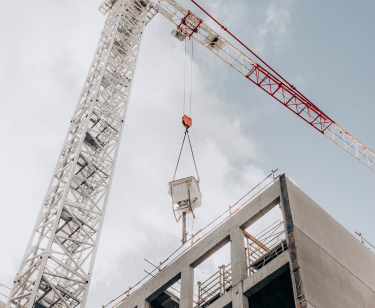Understanding Rigging in Construction
Introduction
Rigging, a critical aspect of construction, involves the safe and efficient movement of heavy materials using specialized equipment. This intricate process requires a deep understanding of principles, equipment, and safety protocols.
The Importance of Rigging in Construction
Rigging plays a pivotal role in the construction industry, enabling the successful completion of large-scale projects. From lifting steel beams to positioning concrete blocks, rigging ensures the smooth and timely execution of tasks. Without proper rigging techniques, construction projects would be significantly delayed and could even pose safety hazards.

Rigging Fundamentals: A Comprehensive Overview
To understand rigging, it's essential to grasp the core concepts:
- Load Weight Estimation: Accurately determining the weight of objects is crucial for selecting the appropriate rigging equipment and ensuring safe lifting operations.
- Center of Gravity: Identifying the center of gravity of a load helps prevent imbalances and ensures safe transportation.
- Rigging Hardware: Familiarity with various rigging hardware, such as shackles, slings, and spreader bars, is essential for selecting the right tools for different tasks.
- Crane Signals: Effective communication between crane operators and ground personnel is vital for safe and efficient rigging operations.
Bigfoot Academy's Rigger Certification Courses
Bigfoot Academy offers comprehensive rigger certification courses to equip individuals with the necessary knowledge and skills. The Level 1 course covers foundational concepts, while the Level 2 course delves into advanced topics, including:
- Complex Load Calculations: Mastering complex load calculations ensures the safe and efficient handling of challenging loads.
- Rigging Supervision: Rigging supervisors play a crucial role in overseeing operations and ensuring adherence to safety protocols.
Essential Rigging Equipment
Rigging involves a variety of equipment, including:
- Cranes: Different types of cranes, such as mobile cranes and tower cranes, are used for lifting heavy loads.
- Slings: Slings, made of various materials like steel and nylon, are used to attach loads to cranes.
- Shackles: Shackles are used to connect slings and other rigging components.
- Spreader Bars: Spreader bars distribute the load evenly across multiple slings.
Rigging in Specialized Environments
Rigging can be particularly challenging in specialized environments, such as:
- Offshore Construction: Rigging operations on offshore platforms require specialized equipment and expertise to handle extreme conditions.
- Demolition Projects: Rigging plays a crucial role in safely demolishing structures, requiring careful planning and execution.
- Industrial Plants: Rigging is essential for moving heavy machinery and equipment within industrial plants.
Safety Considerations in Rigging
Safety is paramount in rigging operations. Rigging professionals must adhere to strict safety guidelines, including:
- Regular Inspections: Equipment should be inspected regularly to identify and address potential defects.
- Load Testing: Periodic load testing ensures that rigging equipment can handle the intended loads safely.
- Emergency Procedures: Rigging professionals should be trained in emergency procedures to respond effectively to unexpected situations.

Conclusion
Rigging is a complex yet essential aspect of construction. By understanding the fundamentals, mastering equipment, and prioritizing safety, professionals can ensure the successful completion of projects. Bigfoot Academy offers comprehensive training and support to help individuals excel in the field of rigging.





